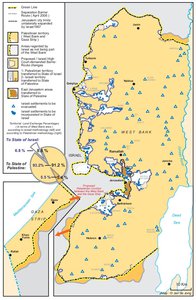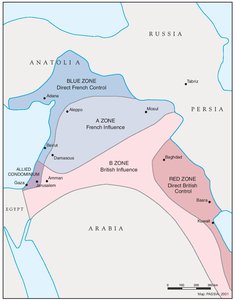THE SYKES-PICOT AGREEMENT, 1916
Map Details
WWI ultimately pitched the Russians, British and French against an alliance of Austro-Hungarian, German and Ottoman armies in a struggle which lasted four years and resulted in shocking losses on all sides. It also led to the partial redrawing of the map of Europe and signaled the final demise of the Ottoman Empire. British and French schemes for the post-WWI future of the Middle East were characterized by the two sides’ competing long-term strategic interests as well as by their wartime alliance against the Ottomans. Both sides recognized in the ascendance of an organized Arab nationalist movement an opportunity to galvanize local forces and bring about an effective revolt against the Ottomans. They also saw an alliance with accommodating and yet legitimate Arab leaders as essential to maintaining their regional interests in a post- Ottoman era. The Hussein-MacMahon correspondence (1915-16), conducted between the British Government, through Sir Henry MacMahon, and the Hashemite leader Sharif Hussein Ibn Ali of Mecca, saw Britain confer upon Hussein legitimacy as the political leader of the Arab people. The British vowed to, “recognize and support the independence of the Arabs in all the regions demanded by the Sharif...”1 In return, Hussein committed his Arab forces to revolt against the Ottomans in accordance with British plans and together with their forces. However, even as the Arabs prepared for the promised revolt (begun in June 1916) the British and French were conducting the secret negotiations that led to the Sykes-Picot Agreement. Ignoring their pledges, the British - represented by the orientalist Sir Mark Sykes - sought to consolidate their control of a land ‘bridge’ stretching from Iraq and the Persian Gulf, to the Mediterranean via Palestine. The French - represented by their Beirut Consul General Charles Picot - opposed granting Britain such powerful leverage in the region without themselves retaining commensurate influence. The compromise formula reached by the two rivals, and endorsed by their mutual ally Russia, whereby Palestine would be ‘shared’ according to spheres of influence and a ‘condominium’ arrangement, with both parties respecting each other’s vital assets and interests therein, was never to eventuate. Six months after Sharif Hussein led the Arab Revolt, as part of which he declared Arab independence from Ottoman rule, British forces took control of southern Palestine and proceeded towards Jerusalem. British Prime Minister Lloyd George declared, “the French will have to accept our protectorate; we shall be there by conquest and shall remain.”2 By December 1917 Jerusalem was in British hands and both the Hussein-MacMahon correspondence and the Sykes-Picot agreement were in tatters. In the meantime, the British had stepped up their contact with the Zionist leadership, pledging their support for a Jewish national home in Palestine in November 1917 (the Balfour Declaration).3 The betrayal felt by the Palestinians, along with much of the Arab World, the reemergence of the bitter power rivalry between France and Britain in the post-war years, and the gains afforded the Zionist movement under British policy, were to become the defining factors in regional tensions between 1918 and 1920. The clash of British and French interests initially disrupted the nascent Palestinian national movement, with the appeal of union within a ‘Greater Syria’ - under French influence (1918-20) - seeming the most practical and immediate means of achieving liberation and thwarting Britain’s pro-Zionist policies. However, many within the Palestinian leadership had emerged from the bitter experience of betrayal with a strong suspicion of both British and French intentions. Their fears were confirmed when, in 1920, French forces took Damascus, expelling Syria’s leadership and placing the nation under their direct rule. With British military rule over Palestine and French rule over Syria, any remaining hope that either of the two powers considered Arab independence favorably evaporated. The third Palestinian Arab Conference, meeting in Haifa in 1920, called for the “independence of Palestine, Syria and Lebanon - each alone.
Related Maps
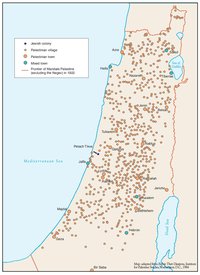
OTTOMAN PALESTINE, 1878
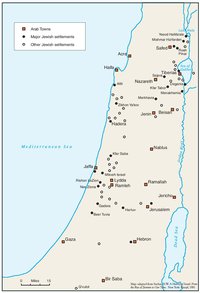
ARAB TOWNS AND JEWISH SETTLEMENTS IN PALESTINE, 1881-1914
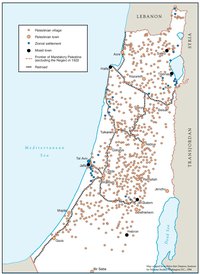
THE BEGINNING OF THE BRITISH MANDATE, 1920
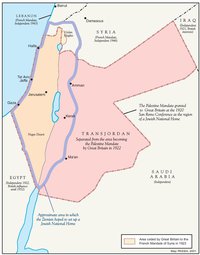
PALESTINE UNDER THE BRITISH MANDATE
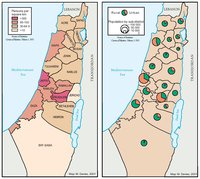
THE DEMOGRAPHY OF PALESTINE, 1931
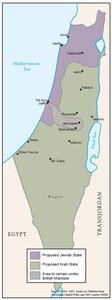
THE PEEL COMMISSION PARTITION PROPOSAL, 1937
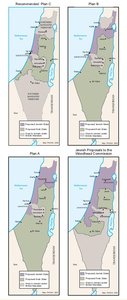
THE WOODHEAD COMMISSION PARTITION PROPOSALS, 1938
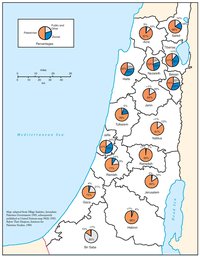
PALESTINIAN AND ZIONIST LANDOWNERSHIP BY SUB-DISTRICT, 1945
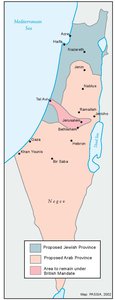
THE MORRISON-GRADY PARTITIONED TRUSTEESHIP PLAN, 1946
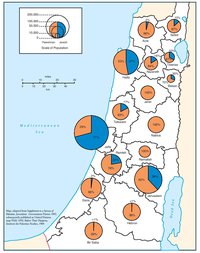
POPULATION OF PALESTINE BY SUB-DISTRICT, 1946
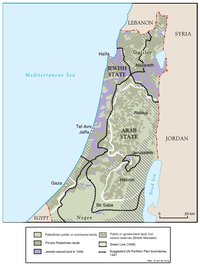
LAND OWNERSHIP IN PALESTINE, 1948
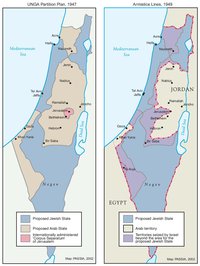
THE UNGA PARTITION PLAN, 1947 – THE 1948 WAR & THE 1949 ARMISTICE LINES
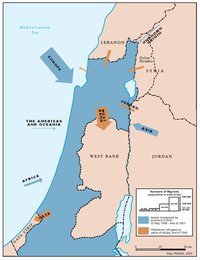
POPULATION MOVEMENTS, 1948-1951
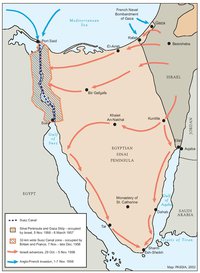
THE SUEZ WAR, 1956
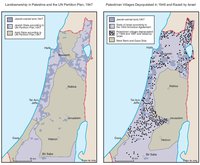
LAND OWNERSHIP IN PALESTINE AND THE UN PARTITION PLAN - PALESTINIAN DEPOPULATED AND DESTROYED VILLAGES, 1948-1949
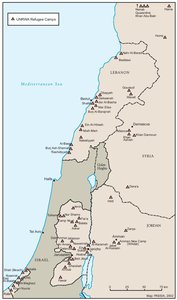
THE PALESTINIAN DIASPORA, 1958
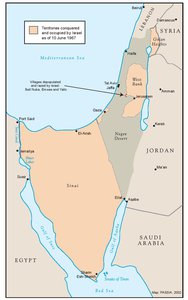
THE NEAR EAST AFTER THE JUNE 1967 WAR
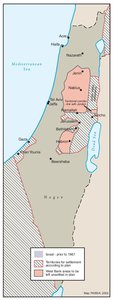
THE ALLON PLAN, JUNE 1967
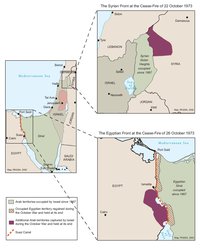
THE OCTOBER WAR, 1973
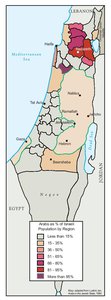
THE PALESTINIANS INSIDE ISRAEL, 1977
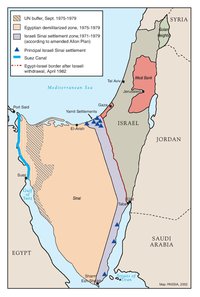
THE CAMP DAVID ACCORDS, 1978-1979
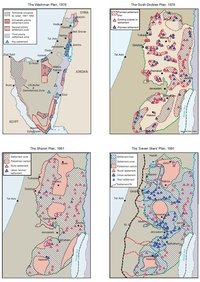
ISRAELI SETTLEMENT MASTER PLANS, 1976-1991
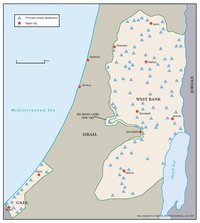
THE 1991 MADRID PEACE CONFERENCE & ISRAELI SETTLEMENTS
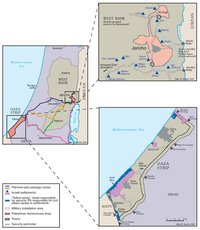
GAZA-JERICHO (OSLO I) AGREEMENT, CAIRO, 4 MAY 1994
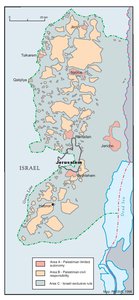
INTERIM (OSLO II) AGREEMENT, TABA, 28 SEPTEMBER 1995
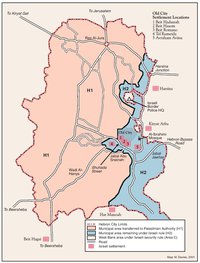
HEBRON PROTOCOL, 15 JANUARY 1997
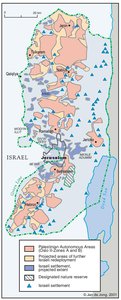
WYE RIVER MEMORANDUM, 23 OCTOBER 1998
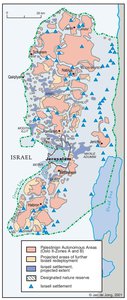
SHARM ESH-SHEIKH AGREEMENT, 4 SEPTEMBER 1999
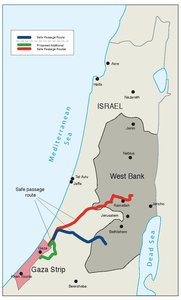
PROTOCOL CONCERNING SAFE PASSAGE BETWEEN THE WEST BANK AND THE GAZA STRIP, 5 OCTOBER 1999
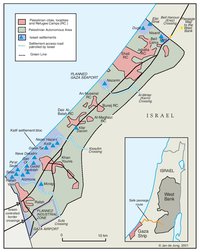
GAZA, 2000
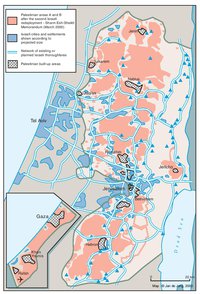
WEST BANK AND GAZA STRIP, MARCH 2000
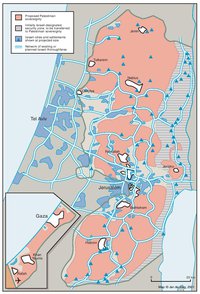
CAMP DAVID PROJECTION, JULY 2000
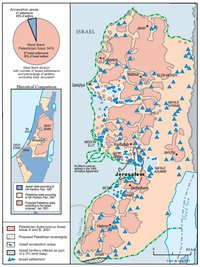
TABA TALKS PROJECTION, JANUARY 2001
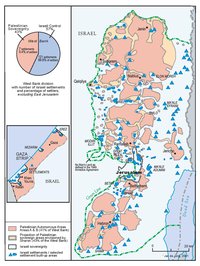
THE SHARON PROPOSAL, SPRING 2001
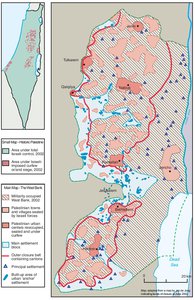
THE REINVASION OF THE PALESTINIAN TERRITORIES, 2001-2002
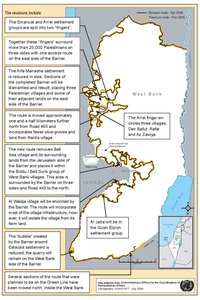
THE ROAD MAP, 2003
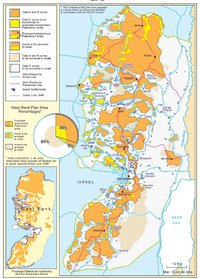
THE GENEVA INITIATIVE AND ACCORD, 2003
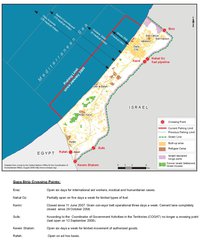
THE ISRAELI DISENGAGEMENT PLAN, 2003-2005
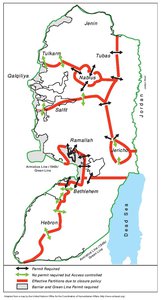
AGREED DOCUMENTS ON MOVEMENT AND ACCESS FROM AND TO GAZA, 2005
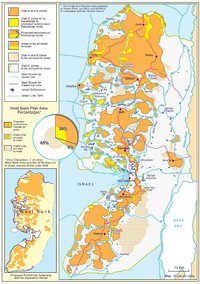
THE SETTLERS' PLAN FOR PALESTINIAN AUTONOMY, 2006
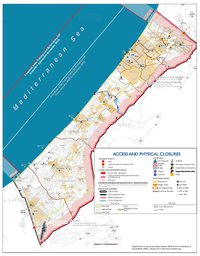
THE GAZA STRIP TODAY (2014)
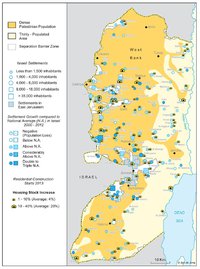
THE WEST BANK TODAY (2014)
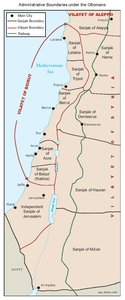
ADMINISTRATIVE BOUNDARIES
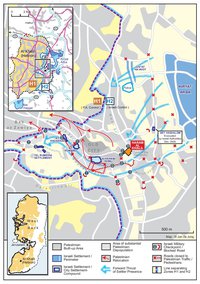
HEBRON
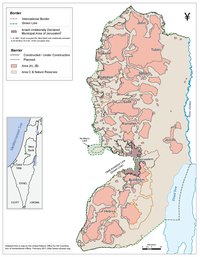
Area C
